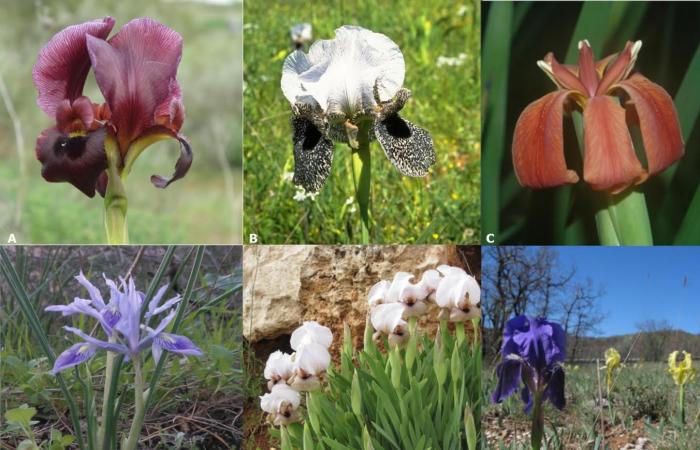Photo credit: the authors
The genus Iris of flowering plants – named after the Greek rainbow goddess due to the different flower color – comprises over 300 species in the northern hemisphere, some of which are endangered or (critically) endangered on the IUCN’s Red List of Threatened Species. Due to the poor fossil record, it is not yet known when the iris first emerged, but scientists believe the genus is only a few million years old and has its closest living relatives in what is now southern Africa.
“We wanted to investigate the factors that influence and maintain the outstanding evolutionary divergence in Iris, a young but very diverse group. We were particularly interested in the development of flower color and morphology as these are key characteristics for pollinator attraction, ”says Dr. Yuval Sapir from the School of Plant Sciences at Tel Aviv University, Israel, corresponding author of a new study in the Open Access Journal Limits of Plant Sciences.
Modern iris species mostly live in (semi) deserts or mountainous environments, although some specialize in damp or humid habitats. They are usually pollinated by insects, but some species are visited by birds and are often capable of self-fertilization (“self-compatible”). Its flowers have three upright petals, the “standards”, and three drooping sepals, the “falls”. Standards and falls are not always the same color and can be dark purple, purple, pink, yellow, or white. Their lower parts form a pollination tunnel that contains both stamens and stamens, the entrance of which can be marked by a ridge or “ridge” that is part of the falls. It is believed that combs act as guides to guide potential pollinators to reward them with nectar or pollen. Falls can also carry a raised hairy area called the “beard”, which may have a similar function. Some species do not produce nectar, but offer a different kind of reward for insects: safe shelter in flowers that warm up in the morning. Such species often have a dark “spot” on the falls that can play a role in raising or maintaining a higher internal temperature.
Given this diversity, what could the last common ancestor of the iris have looked like?
“Here we show that the ancestor of the genus Iris probably had purple flowers with a crest and a spot on the falls. Its flowers were also likely insect-pollinated, produced nectar as a reward, and were self-tolerating. From that point on, rapid development resulted in variations in hundreds of combinations of color, size, and other flower characteristics, “says Dr. Katarzyna Roguz, a postdoctoral fellow who led the research.
Roguz et al. created a phylogeny or evolution tree based on the similarity of the DNA sequence from public databases with six genes – five from the chloroplast and one from the nucleus – from 215 species, 10 subspecies, and two species of iris. 16 characteristics each with regard to flower color, reproduction, habitat and distribution. Phylogeny largely based the published taxonomy of the genus Iris, which was divided into seven subgenera (Limniris, Iris, Hermodactyloides, Nepalensis, Pardanthopsis, Scorpiris, Xiphium) with the largest subgenera Limniris and Lophiris divided into two and six sections.
The researchers show that many of the characteristics of the iris are evolutionarily labile – that is, they switch back and forth between alternative states. For example, spots were lost and repeatedly regained, while shifts between purple and yellow flowers were common. Beards also developed independently at least three times. While the vast majority of the iris remain insect pollinated, there have been at least two shifts towards bird pollination followed by several reversals back to insect pollination. Other traits have been shown to be evolutionarily more stable, such as the mating system and the ability to produce nectar where there have been few shifts between states.
“Our results suggest that pollinators are at least partially responsible for the development of the iris flower shape and that they still play an important role in the divergence of species in this genus. The development is amazing! ”Says Sapir.
###
These were the details of the news The primordial iris probably had purple flowers that were pollinated by... for this day. We hope that we have succeeded by giving you the full details and information. To follow all our news, you can subscribe to the alerts system or to one of our different systems to provide you with all that is new.
It is also worth noting that the original news has been published and is available at de24.news and the editorial team at AlKhaleej Today has confirmed it and it has been modified, and it may have been completely transferred or quoted from it and you can read and follow this news from its main source.

